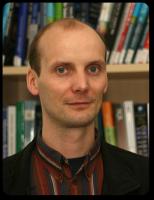Applicability of a noise-based model to estimate in-traffic exposure to black carbon and particle number concentrations in different cultures
Environment International, (2015)DOI: http://dx.doi.org/10.1016/j.envint.2014.10.002
Abstract
Abstract Several studies show that a significant portion of daily air pollution exposure, in particular black carbon (BC), occurs during transport. In a previous work, a model for the in-traffic exposure of bicyclists to \BC\ was proposed based on spectral evaluation of mobile noise measurements and validated with \BC\ measurements in Ghent, Belgium. In this paper, applicability of this model in a different cultural context with a totally different traffic and mobility situation is presented. In addition, a similar modeling approach is tested for particle number (PN) concentration. Indirectly assessing \BC\ and \PN\ exposure through a model based on noise measurements is advantageous because of the availability of very affordable noise monitoring devices. Our previous work showed that a model including specific spectral components of the noise that relate to engine and rolling emission and basic meteorological data, could be quite accurate. Moreover, including a background concentration adjustment improved the model considerably. To explore whether this model could also be used in a different context, with or without tuning of the model parameters, a study was conducted in Bangalore, India. Noise measurement equipment, data storage, data processing, continent, country, measurement operators, vehicle fleet, driving behavior, biking facilities, background concentration, and meteorology are all very different from the first measurement campaign in Belgium. More than 24 h of combined in-traffic noise, BC, and \PN\ measurements were collected. It was shown that the noise-based \BC\ exposure model gives good predictions in Bangalore and that the same approach is also successful for PN. Cross validation of the model parameters was used to compare factors that impact exposure across study sites. A pooled model (combining the measurements of the two locations) results in a correlation of 0.84 when fitting the total trip exposure in Bangalore. Estimating particulate matter exposure with traffic noise measurements was thus shown to be a valid approach across countries and cultures.


